
The Free Church of England (FCE) is an Episcopal Church based in England. The church was founded when a number of congregations separated from the established Church of England in the middle of the 19th century.

The Reformed Episcopal Church (REC) is an Anglican Church. It was founded in 1873 in New York City by George David Cummins, a former bishop of the Protestant Episcopal Church.

St. Michael's Church is a historic Episcopal church at 225 West 99th Street and Amsterdam Avenue on Manhattan's Upper West Side in New York City. The parish was founded on the present site in January 1807, at that time in the rural Bloomingdale District. The present limestone Romanesque building, the third on the site, was built in 1890–91 to designs by Robert W. Gibson and added to the National Register of Historic Places in 1996.
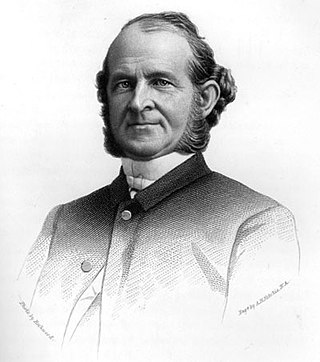
George David Cummins was an American Anglican bishop and founder of the Reformed Episcopal Church.

The Reformed Episcopal Seminary is a private seminary in Oreland, Pennsylvania. It was founded in 1887 as the first seminary of the Reformed Episcopal Church.
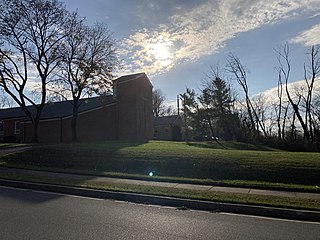
Bishop Cummins Reformed Episcopal Church is a Reformed Episcopal Church congregation in Catonsville, Maryland. Founded in 1874, the building it occupied in Baltimore from 1879 to 1961 is listed on the National Register of Historic Places under the name Cummins Memorial Church.

St. Andrew's Episcopal Church is located at North Main and Madison avenues in Albany, New York, United States. It is a complex of three buildings, centered on the church itself, a stone structure designed by architect Norman Sturgis in the Late Gothic Revival architectural style and built in 1930. In 2005 it was listed on the National Register of Historic Places.
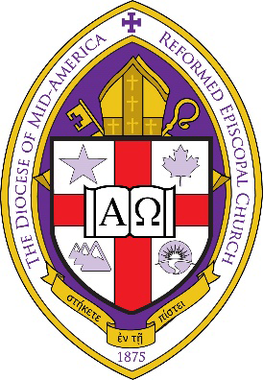
The REC Diocese of Mid-America, with the Convocation of the West and Western Canada, is a Reformed Episcopal Church and an Anglican Church in North America diocese, since its foundation in 2009. The REC Diocese of Mid-America is distinct from a diocese of the same name of the Anglican Province of America, which is not affiliated with the Anglican Church in North America. It has 34 congregations, 32 in 12 American states, which are Arkansas, California, Colorado, Illinois, Louisiana, Michigan, Missouri, Mississippi, North Dakota, Nebraska, Oklahoma, Texas and Wisconsin, and 2 congregations in the Canadian province of British Columbia. Its headquarters are located in Dallas, Texas. The Bishop Ordinary was the late Royal U. Grote, Jr., replaced upon his death by the Bishop Coadjutor, Ray R. Sutton.

The Diocese of the Northeast and Mid-Atlantic, with the Convocation of Eastern Canada, formerly known as the New York and Philadelphia Synod, is a founding jurisdiction of the Reformed Episcopal Church in 1873 and, more recently, a founding diocese of the Anglican Church in North America in 2009. It comprises 27 parishes, 26 of them in five American states – Maryland, Massachusetts, Pennsylvania, New Jersey and New York – and one in the Canadian province of Ontario. The current bishop is Bill Jenkins.

The Diocese of the Southeast is a Reformed Episcopal Church diocese and as such an Anglican Church in North America founding diocese. The diocese comprises 32 parishes, 30 in South Carolina and 2 in Georgia, in the United States. Its headquarters are located in Summerville, South Carolina. The current bishop ordinary is Willie J. Hill Jr., who was installed in September 2022.
Ethan Allen was an Episcopal priest and author, the first historian of the Episcopal Diocese of Maryland.
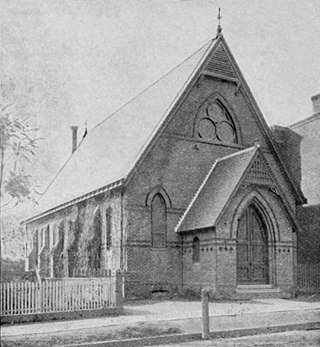
The Church of the Corner Stone was a Reformed Episcopal congregation in Newburgh, New York, formed nearly 2 years after a split from the Protestant Episcopal Church in 1873. For a brief period, it was the church of the Rev. James Martin Gray. The 1870s church building now serves as the Best Temple Church of God in Christ.
Willie James Hill Jr. is an American Anglican bishop currently serving as bishop ordinary of the Reformed Episcopal Church's Diocese of the Southeast and as rector of St. John's Reformed Episcopal Church in Charleston, South Carolina.

The Missionary Diocese of Cuba is a Cuba-based diocese of the Reformed Episcopal Church. Based in Holguín, the diocese currently has approximately 40 congregations with a combined average attendance of 1,000.
Charles William Dorrington is a retired Canadian Anglican bishop and church musician of the Reformed Episcopal Church (REC). From 1996 to 2016, he was bishop ordinary of the Diocese of Western Canada and Alaska. He also initiated and oversaw the REC's work in Cuba, which led to the formation of the Missionary Diocese of Cuba.
Sanco King Rembert was an American Anglican bishop notable for being the first African-American bishop of the Reformed Episcopal Church. Consecrated in 1966 to assist in the REC's Missionary Jurisdiction of the South, he served from 1987 to 1998 as bishop ordinary of the Diocese of the Southeast. Since Rembert, all bishops ordinary in the Diocese of the Southeast have been black.
Daniel Gilbert Cox was an American bishop of the Reformed Episcopal Church. He also served for 36 years as rector of Bishop Cummins Reformed Episcopal Church, overseeing its move from its historic building in Baltimore to Catonsville, Maryland.
William Alan "Bill" Jenkins Sr. is an American Anglican bishop. He is currently the 13th bishop ordinary of the Reformed Episcopal Church's Diocese of the Northeast and Mid-Atlantic (NEMA). Prior to his election as coadjutor bishop, he was canon to the ordinary in the diocese.

Christ Memorial Reformed Episcopal Church was a Reformed Episcopal Church congregation in Philadelphia. Founded in 1887 and completed in 1888, the building it occupied in West Philadelphia was for most of its history was also the campus of Reformed Episcopal Seminary. In 2004, a lightning strike caused the decaying steeple of the church to collapse, resulting in the building's closure. After a prolonged conflict over the insurance payout, the REC sold the building, which was demolished in 2018 and replaced by apartments.
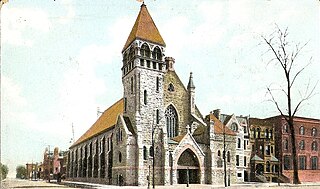
Christ Reformed Episcopal Church was a church in Chicago that became a founding member of the Reformed Episcopal Church (REC) in 1873. From around 1860 until its demolition in 1920, the church occupied a Victorian Gothic building on South Michigan Avenue. In addition to its role in REC history, the church was also noted for its Tiffany stained glass windows, many of which survived in different locations.




















